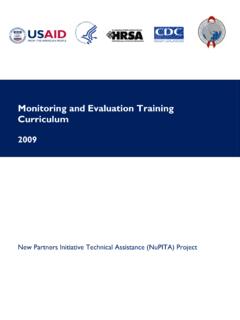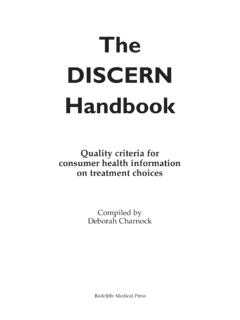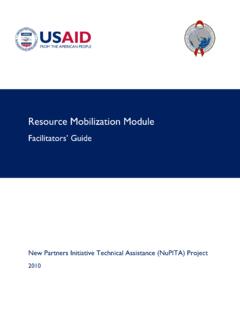Transcription of Overview of the Early Grade Reading Assessment (EGRA)
1 Prepared for the USAID workshop Designing and Implementing Early Grade Reading Assessments: Understanding the Basics March 2015 Overview of the Early Grade Reading Assessment (EGRA) Session Objectives Know what EGRA is and what it measures Be aware of the research-based rationale for EGRA content and design Understand different purposes of EGRA and current usage 3 What Is EGRA? EGRA stands for Early Grade Reading Assessment . The Assessment is used to measure children s progress toward learning to read. EGRA is administered orally by an assessor, one-on-one with a child.
2 4 5 Child reads from paper, called pupil stimuli Assessor Records Results on Tablet [Video ] 6 Assessor records responses on a tablet or paper EGRA History 7 10 13 29 16 18 17 23 19 0510152025302006200720082009201020112012 20132014 Number of Countries Developed by RTI with USAID support; Review by expert panel Piloted/validated with USAID & World Bank support 1st EGRA workshop hosted by USAID & World Bank 2nd EGRA workshop by USAID & World Bank; Igniting Report launched USAID Education Strategy; EGRA Guidance Notes ABE-ACR EGRA Toolkit Source: Where in the World Has EGRA Been Used?
3 Used in 60+ countries Adapted for 100+ languages Used by 30+ organizations 8 Source: What Does EGRA Measure? EGRA assesses critical skills that Early primary-age pupils (~ grades 1-3) need in order to read with understanding and to be successful in other subjects and later grades. Components are aligned with essential and teachable Reading skills that research shows children can and should acquire in the Early grades. 9 Sentences can be combined to create text with meaning Words can be combined to produce sentences Letters can be combined to spell words Sounds can be represented with letters Words can be broken into sounds Source: Dubeck & Gove, 2015 Why EGRA?
4 While the Education For All (EFA) goals were successful in increasing enrollments, little information was available on learning outcomes. International assessments were not necessarily being used in many low-income countries. In places where learning assessments were available, did not know if children were not performing well because they didn t know content, or because they couldn t read the test. Its theoretical foundation supports quick adaption to meet demand for Early assessments 10 Source: Crouch & Gove, 2011; Gove & Wetterberg, 2011; Wagner et al., 2012 Why Assess Reading ?
5 The ability to read and understand a simple text is one of the most fundamental skills a child can learn. Measurements of how quickly and accurately children can read a text out loud, and how well they understand it, align with both scientific and a popular understanding of what it means to be able to read. 11 Source: Fuchs et al., 2001; Kim et al., 2011 Why Assess Early ? Children who learn to read within the first few grades of primary education have a greater chance of succeeding in and completing primary school. Evidence indicates that learning to read both Early and at a sufficient rate are essential for learning to read well.
6 Learning to read becomes more difficult as children grow older Children who do not learn to read in the first few grades are more likely to repeat and eventually drop out. 12 Source: Adolf et al., 2010; Daniel et al., 2006; Darney et al., 2013; Scanlon et al., 2008; Torgesen, 2002 Why Early Matters Reading Trajectories of Low and Middle Readers Reading fluency (words per minute) Grade level 13 Source: Good, Simmons, & Smith,1998 Why Assess Orally? Child-centered Assessor and child interact one-on-one Rapport is established Timing begins when child speaks Administered in a language the child understands Oral tests of basic skills help us better measure which foundational skills children have or do not have.
7 14 Different Types of Assessments: A Continuum Completion/promotion exams Matriculation exams A levels Examinations SACMEQ PASEC PISA PIRLS/Pre-PIRLS TIMSS Early Grade Reading Assessments Assessment surveys Class tests Homework Projects/presentations Mastery/monitoring checks Classroom Assessment Formal High cost More time High stakes Informal Lost cost Less time Low stakes 15 Source: Kanjee, 2009 How Can EGRA Results Be Used? Examine gaps in Reading competencies to raise awareness, improve policy, curriculum, etc. (country or regional level) Identify key skills, or areas of instruction, that need to be improved in order to target interventions (teacher training, materials, etc.)
8 Inform education sector strategic planning, resource allocation and budgeting Identify changes over time Evaluate outcomes of program designed to improve specific Early Grade Reading skills Develop Reading indicators and benchmarks 16 Source: Gove & Cvelich, 2011, Gove et al., 2013 Example: EGRA in Northern Nigeria Since 2011, EGRAs conducted in two states have been used to: Provide policy makers and other stakeholders with information to inform state-level planning Identify areas for which instruction needs to be improved Measure improvements over time at the state level 17 Using EGRA Results: System Diagnostic EGRAs conducted in Kenya have been used to evaluate the impact of an Early Grade Reading program.
9 The proportion of pupils Reading English at benchmark by the time of the endline Assessment was more than twice as high in the treatment group ( ) than control schools ( ). Growth in Kiswahili comprehension levels: of Class 1 at baseline and at endline were able to answer at least four out of five comprehension questions correctly. In Class 2, the percentage improved from to 18 Using EGRA Results: Impact Evaluation Source: Kenya PRIMR, 2014 19 Using EGRA Results: Explore Costs of Design Source: Kenya PRIMR, 2014 1 02468101214 Coach tabletTeachertabletChild e-readerControlOral Reading fluency gains over baseline per dollar spent National langLingua francaOther Data Collected with EGRA EGRA is often administered with other instruments to collect contextual information to inform data analysis and recommendations.
10 These include: Pupil questionnaire Teacher questionnaire Head teacher/Principal questionnaire School and classroom inventory Reading lesson observation The Snapshot of School Management Effectiveness (SSME) is one package of instruments sometimes used in conjunction with EGRA to obtain a broader picture of school-related factors affecting student performance in math and Reading . 20 21 Using EGRA Results: Inform Teacher Training Source: Indonesia EGRA/SSME National Policy Dialogue Workshop, 2014 Category Referent Words Faster Exercise book all completed & marked No pages * Exercise book most completed & marked No pages * Pupil work on the wall None * Has library, pupils do not use it No library * Has library, pupils use it No library 14* Majority of class time Reading aloud No time spent Corrects pupil, does not scold Does nothing * Repeat / clarify Does nothing ** Checks for pupil understanding with assistance No questions 13* 22 Using EGRA Results.






